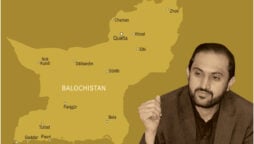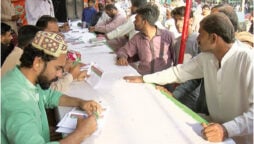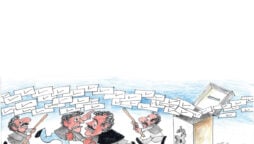Pakistan’s rapidly plunging economic indicators have compounded fears of the country going into a default anytime soon while the grim situation at hand triggered a heated debate among the political circles. Earlier this year, in June 2022, similar fears of the country nearing a default were, however, allayed when the State Bank of Pakistan reported a decline in the cumulative national debt by nearly $3.5 billion. But despite this achievement, the national liabilities still stood at a colossal $127 billion, which is a constant source of concern for the economists and citizens alike. Among the swirling rumours of financial destruction, finance minister Ishaq Dar has stated that Pakistan will not default in making its debt payments. While many are willing to back Dar’s claims, there are millions of others who deem it as yet another attempt to hoodwink the nation by the incumbent government. This week, Bol News asks four leading experts: Is Pakistan really on the brink of default on its foreign debt repayments?

Dr Hafeez Pasha
Leading Economist
Unfortunately, Pakistan’s remaining foreign exchange reserves are only $8 billion, down from $20 billion around 15 months ago. As you can clearly see, they are declining quickly. Moreover, we need foreign funding to finance two things: our trade deficit and the repayment of our debts.
According to the former finance minister, Miftah Ismail, Pakistan needs $34 billion at the moment. So on one hand, we just have $8 billion worth of reserves, while on the other, our liabilities will be around $34 billion in the future. This is the biggest gap in the history of Pakistan. Secondly, the biggest concern is that the international credit rating agencies like Moody’s have diminished the ratings of Pakistan to such an extent that we are being included among the countries that are on the verge of default like Argentina, Nigeria, Ecuador, etc. As a result, obtaining private financing from outside Pakistan, like bonds and commercial bank loans, has become extremely difficult.
Furthermore, another big question being raised these days is whether we will be able to redeem our bonds worth $1 billion in the first week of December. When these things happen to a country, it automatically falls into the danger zone. Although Pakistan is one of the five most significant countries in the world and has nuclear power, they might rescue us.
However, this rescue will turn out to be extremely and worryingly costly for Pakistan. I do not want to explicitly mention it. The economic situation is out of our hands now; the demand and supply of dollars are wrecked. It is impossible to reduce the dollar-to-rupee ratio from 200.
The question is: will we be able to control the devaluation of our currency, or will it keep depreciating? Since 1988, we have gone to the IMF 22 times because we were not able to control our trade deficit. I would only like to request that the coalition government and other political parties sit together and save Pakistan before it’s too late.

Shaukat Tarin
Former finance minister
The Credit Default Swap (CDS) is quite high at the moment; therefore, there is a perception in the market that Pakistan might default. However, we will not default because we have $8 billion currently, and moreover, we have agreements with multilaterals like the IMF. Therefore, when a country has contracts with the IMF, it cannot default. So we will ask for more money from the IMF and World Bank, and I am sure they will help us and get strict with us, which will be useful for the country.
Hence, I do not think we will default because Pakistan is a very important country for many international communities. According to a renowned book on Pakistan, the author has quoted Bruce Riedel, a former high-ranking CIA and Pentagon official, who stated that the United States will never leave Pakistan. He meant that they will not let Pakistan get very stable, nor will they let it sink. Now you can clearly understand what will happen. Speaking about Ishaq Dar not being able to lower the dollar-to-rupee rate from 200, it is nearly impossible. How can it go below 200? It can only happen if you sell dollars in the market and buy Pakistani rupees; only then will the dollar rate decrease. But unfortunately, we do not have this amount of money. So things will only rely on the fundamentals—the supply-demand chain. We cannot overvalue the rupee; it needs to remain undervalued. The major reason for this wrecked economy is political polarisation in Pakistan. Due to this political uncertainty, investors have stopped investing in Pakistan.
They are not even willing to give money to Pakistan due to its weak government. Everyone knows that since the last seven to nine months, this incumbent government has lost 75 per cent of the elections. They know that they cannot rely on this coalition government because it will break apart at any time. So obviously, when there is political uncertainty, a lack of investments, inflation at its peak, strict conditionality by the IMF, and recent devastation caused by floods, the growth will be equal to zero. The only solution to come out of this crisis is to call for new elections.

Dr Ikramul Haq
Advocate Supreme Court
If we take a look at the long-term payment schedule of Pakistan, this statement might be true. However, we will not be in the danger zone immediately because the current debts will be repaid. But even if we do not default in the next two to three months, this pattern will be recurrent because in the upcoming years our liabilities will not be less than $10 billion.
Hence, we need to renegotiate and reschedule our loans if we want Pakistan to stay out of the danger zone. It’s not something that will be resolved within a month or year; we need a long-term plan. We need to activate the debt office, which was created under the Debt Limitation Act, and our leaders need to think outside the box.
The government is under pressure to repay its external debts, so it’s not at all easy to stabilise the dollar-to-rupee ratio. Moreover, if we keep borrowing money from outside, we will get into a deadly debt trap.
Pakistan was not able to improve its overall economy due to the fiscal deficit. If our Gross Domestic Product’s expenditure is around 19 per cent and our income is 10 to 11 per cent then no country can survive with this sort of a deficit. If our fiscal deficit is high, then our income is not capable of repaying our debts. Pakistan needs to reduce its expenditure and increase its income.
We are not seriously trying to control our fiscal deficit. We should not take this lightly. Economic experts both inside and outside Pakistan have repeatedly stated that Pakistan is in serious trouble. Hence, we need a paradigm shift, and this paradigm shift will not come through these political parties.
We need to have a five- to ten-year plan to restructure our economy and get rid of this political polarisation in the country as soon as possible.

Muzammil Aslam
PTI spokesperson on Economy and Finance
If you look at the indicators, then yes, it is on the verge of default. The Credit Default Swap (CDS) rate in the history of Pakistan had been at 5 per cent; unfortunately, it has increased to 122 per cent today. Moreover, it is indicating that in the absence of an IMF programme and foreign funding from friendly countries, it is very unlikely for Pakistan to repay all its debts in the next 12 months. So we are in a very critical situation as far as debt repayment is concerned.
Speaking about the incumbent government, whatever commitments were made so far have not materialised yet. Even if they have followed through on their commitments, we still lack more than $15 billion in funds to repay for just this year. Hence, we can only hope and pray to get out of this situation. Our dollar-to-rupee ratio has not been able to stabilise. When PTI left, it was around Rs180 per dollar. At that point in time, the opposition government felt that the currency was way overvalued and should be below Rs 180.
But when they came to power, their statement completely changed, and they said that the rupee should not be more than Rs 200. The rupee is currently trading at Rs 224.5 per dollar.
However, this 224.5 is not a reflection of the market. If you go to the market and buy dollars, the rate will be Rs 250 or even higher. This shows there is a lack of confidence; people who have dollars are not selling them, and given the early indicators, everyone is saying that Pakistan will have to go through a tough time.
So yes, we are on the verge of default; we are just waiting for an official announcement from the concerned authorities. Our prime minister also recently mentioned that if we do not get money from the international community, we will soon be go broke.
Catch all the National Nerve News, Breaking News Event and Latest News Updates on The BOL News
Download The BOL News App to get the Daily News Update & Live News.











 Read the complete story text.
Read the complete story text. Listen to audio of the story.
Listen to audio of the story.